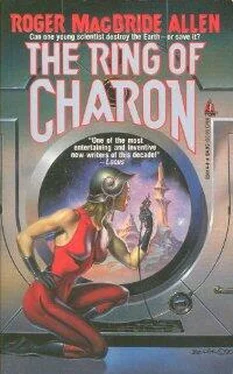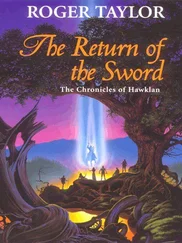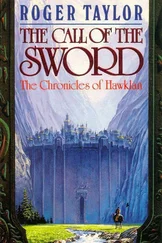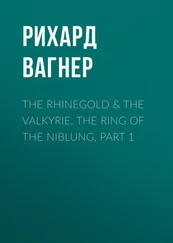Roger Allen - The Ring of Charon
Здесь есть возможность читать онлайн «Roger Allen - The Ring of Charon» весь текст электронной книги совершенно бесплатно (целиком полную версию без сокращений). В некоторых случаях можно слушать аудио, скачать через торрент в формате fb2 и присутствует краткое содержание. Год выпуска: 1990, ISBN: 1990, Издательство: Tor Books, Жанр: Фантастика и фэнтези, на английском языке. Описание произведения, (предисловие) а так же отзывы посетителей доступны на портале библиотеки ЛибКат.
- Название:The Ring of Charon
- Автор:
- Издательство:Tor Books
- Жанр:
- Год:1990
- ISBN:0-812-53014-4
- Рейтинг книги:5 / 5. Голосов: 1
-
Избранное:Добавить в избранное
- Отзывы:
-
Ваша оценка:
- 100
- 1
- 2
- 3
- 4
- 5
The Ring of Charon: краткое содержание, описание и аннотация
Предлагаем к чтению аннотацию, описание, краткое содержание или предисловие (зависит от того, что написал сам автор книги «The Ring of Charon»). Если вы не нашли необходимую информацию о книге — напишите в комментариях, мы постараемся отыскать её.
The Ring of Charon — читать онлайн бесплатно полную книгу (весь текст) целиком
Ниже представлен текст книги, разбитый по страницам. Система сохранения места последней прочитанной страницы, позволяет с удобством читать онлайн бесплатно книгу «The Ring of Charon», без необходимости каждый раз заново искать на чём Вы остановились. Поставьте закладку, и сможете в любой момент перейти на страницу, на которой закончили чтение.
Интервал:
Закладка:
It was of some help in getting organized, but the astronomers had a more basic problem: quite understandably, they could not believe their eyes. But Wolf quickly discovered that their electronic assistants were able to handle the changed circumstances without skipping a beat. Most of the IAU grams came from robotic observation stations. Robots didn’t have to worry about believing in what they saw: discoveries, major ones, were literally being made on automatic.
With the loss of nearly all the spaceside instruments, modern astronomy had been decapitated. Suddenly astronomy was back in the mid twentieth century, dependent on crotchety instruments and crotchety observers perched on lonely mountaintops all over the world.
Some modern hardware was earning its keep. The most fruitful data was coming from the ground-based wide-scan telescopes. These instruments tracked the sky, watching for objects that moved against the fixed background of Earth’s sky. They were designed to spot uncharted and potentially profitable asteroids or incoming comets, and to watch for spacecraft on collision courses with each other. The skyscanners had spotted a number of comets and asteroids, over the years, doing their part in the history of astronomy, but suddenly they were spotting dozens of full-blown planets, both around Earth’s new sun and around the other stars.
It was too soon to establish much about the properties of the new planets, except that they existed. There weren’t even resolvable images for most of them yet. They were merely dots of light that moved against the stars. JPL’s computers quickly nailed positions and provisional orbits for many of them.
Wolf knew at first glance that those orbits were damnably odd. No two planets in any system seemed to be moving in the same orbital plane. Many of the planets were in highly inclined orbits. Some were traveling in opposite directions from each other. The differing orbital planes Wolf could deal with. Natural mechanisms could cause that. If two worlds came close to each other, the interaction of their gravity fields might deflect them into new orbital planes, each flinging the other off into a new orbital inclination. Something like that had happened to Pluto, billions of years ago. But the close distancing and the retrograde orbits shook Wolf. There was no conceivable way planets could form in those positions, moving in opposite directions.
A quick-look calculation at Earth’s own orbit showed the planet was moving about its new star once every 370 days. The calendars were going to be off by four days from now on.
That seemed manageable enough, but Earth was in a mighty strange neighborhood. Its closest new planetary neighbor rode an orbit a mere three million kilometers inward, though its orbit was inclined forty-five degrees from Earth’s and it was moving east to west. It was in retrograde orbit, moving in the opposite direction, and near its closest approach at the moment. Through Earth’s telescopes, it showed itself a lovely blue-green world.
Two hours after their scopes got those images, the observatories came up with another stunner. Earth was looking down into the new sun’s polar region. Wolf took a long moment to accept that. Well, if the orbits were in all inclinations, somebody had to be in a polar orbit.
One other damn strange thing: as well as he could judge from the first-look data, all the worlds were terrestrial. No gas giants, no ice balls. And all of them rode orbits that seemed to be inside their primary star’s biosphere, the narrow band of distances from a star where a planet could sustain roughly Earthlike temperatures.
Certainly Earth was inside this new star’s biosphere, with a vengeance. One of the very few things that had not changed was the mean solar constant—the average amount of solar energy reaching a given square area of the Earth’s surface. That seemed to have remained the same to within several decimal places.
And that strongly suggested something else he didn’t want to know. Maybe Wolf wasn’t quite as flexible as he hoped.
Dianne Steiger felt a moment of triumph. Forget the robots and the on-board automatics and the Pack Rat’s artificial intelligence programs. This was one moment the Pack Rat needed an honest-to-God, flesh-and-blood human on board. The poor old ship wasn’t ready to cope with this situation on her own. She needed a human pilot—and a repair worker.
Repairs first, though. Dianne peered carefully at the video display. As far as she could tell, part of the Rat’s nose had been lopped off in the first moment of… of whatever had happened. Dianne blinked, realizing that she had not developed any more meaningful way of describing what she had seen.
Well, what the hell had it been? What, exactly, had happened? Dianne felt something cold in her gut when she even considered the question.
But she had enough on her plate focusing on smaller problems. Whatever that thing was, it had done a number on her ship. It looked as if the first manifestation of that damn blue-unwhiteness had come into existence right across the Rat’s bow, leaving five centimeters of the ship’s nose on the other side. The blue-unwhite plane must have sliced across the nose like a knife through a salami. Perhaps a tiny sliver of debris was still floating out in space somewhere, back in the Solar System.
Concentrate on what she could deal with. She looked again at the nose damage. The first five centimeters of the Pack Rat’s nose weren’t there anymore, and the nose jets’ recessed nozzles were truncated, obviously screwing up their thrust patterns. It was lucky they had fired at all, instead of simply blowing up. She could see scorch marks on the hulls, mute evidence that some reaction-rocket exhaust gases had gone where they shouldn’t have. It had been close.
So, kiss the nose jets good-bye. She dared not press her luck by using them again. It was possible to fly the ship without nose jets. Difficult, but possible.
Still, the damaged nose was going to need some sort of repair. It could never survive reentry with bare metal exposed and the nose the wrong shape. Even if she didn’t fly the ship home, but merely to a spaceside repair station, she did not want to go cruising around with the nose gone. The delicate components in there were never meant to be exposed to the temperature extremes of open space. She had to patch it.
Spray foam. The number two arm had a foam nozzle on it, intended for dealing with just this sort of problem. She switched it on, and brought the arm in as close as she could to the nose.
Working with a fine spray and a delicate touch, she slowly built up layer after layer of ablative, heat-absorbing foam. The foam turned rock hard within seconds of hitting vacuum. The idea was that the stuff would survive long enough for one reentry. It would slough off as it melted, taking the excess heat of reentry with it as it ablated away.
It was a delicate job. The foam needed to be strong and well bonded, and needed to match the old contours of the nose as closely as possible. Dianne wanted to hurry, to get through and get the hell out of a chunk of space where fields of unseeable blue-unwhiteness appeared and cut chunks out of your spacecraft. But hurry could kill her. She knew that. She worked slowly and carefully, forcing herself to hold the hurried, overanxious side of her personality in check.
Finally the job was done. She pulled the manipulators away and examined her handiwork as seen from the remote camera mounted on the number three arm. It looked good. A clean job.
The number one and two arms backed away as she drew in the waldo controls. The ablative foam ought to hold together long enough for reentry. Reentry. Was she really willing to take that risk? She sat back and thought about it. Reentry was certainly riskier than going for an emergency docking with one of the orbital stations. NaPurHab was out of reach to her—and still didn’t seem likely to be a healthy place to be. The other stations? She didn’t have a line of sight on any of the major stations from this orbit, and the comm channels were hopelessly screwed up. Probably most of the communications satellites were gone. She had no idea if the orbital stations were still there—or if they would remain where they were, or were capable of docking spacecraft and taking in refugees.
Читать дальшеИнтервал:
Закладка:
Похожие книги на «The Ring of Charon»
Представляем Вашему вниманию похожие книги на «The Ring of Charon» списком для выбора. Мы отобрали схожую по названию и смыслу литературу в надежде предоставить читателям больше вариантов отыскать новые, интересные, ещё непрочитанные произведения.
Обсуждение, отзывы о книге «The Ring of Charon» и просто собственные мнения читателей. Оставьте ваши комментарии, напишите, что Вы думаете о произведении, его смысле или главных героях. Укажите что конкретно понравилось, а что нет, и почему Вы так считаете.












